Audie Murphy was the youngest and most decorated American soldier of World War II. He is considered the most decorated soldier in American military history, having received every military combat award for valor from the U.S. Army and French and Belgian awards for heroism. Despite his youth and small stature, Murphy was a fearless and skilled soldier, inspiring others with his courage and determination. After the war, he played himself in a film biography and had a successful acting career. Today, he is remembered as an American hero and a symbol of bravery and sacrifice.
Early Life
Audie Leon Murphy was born on June 20, 1924, in Kingston, Hunt County, Texas, to Emmett Berry Murphy and Josie Bell Killian. He was the seventh of twelve children and was of Irish descent. His family was named after two men of the same name who took care of his mother after Emmett’s father temporarily abandoned her. His father kept coming and going until he eventually left the family for good.
Growing up in Farmersville, Greenville, and Celeste, Murphy started elementary school but eventually dropped out in the fifth grade. He started working as a cotton picker to support his family. In 1941, his mother passed away, and he took on various jobs to survive in Greenville. His siblings were sent to children’s homes and orphanages.
Murphy decided to join the armed forces to support his family and serve his country and was finally inducted in June 1942.
Military Career
When the Marines, paratroopers, and navy rejected a 15-year-old Murphy in 1942 because he was too young and short, they had no idea what they were missing. However, when Murphy managed to join the Army in 1943 by lying about his age and saying he was 18, few expected the small, 5’6″ and 110-pound soldier to excel in combat. During basic training, he was so weak that he fainted, and some wanted to transfer him to work as a cook. But Murphy insisted on serving in combat.
After completing basic training, Murphy was assigned to the 3rd Infantry Division and began training as an infantryman.
Murphy’s bravery and skill in the landings on Sicily and his service in Italy, France, and Germany earned him a total of 33 medals from the U.S. Army, five of which he received multiple times. He also received five French decorations, including the Legion d’Honneur, the Croix de Guerre (twice!), and the Belgian Croix de Guerre. Murphy earned all these honors through his bravery and sacrifices on the battlefield. He received his first medal in Sicily after taking out two Italian officers with precise fire, and his other war successes became legendary.
When a German machine-gunner tricked Murphy’s best friend into killing him by pretending to surrender, the young Texan was so enraged that he attacked the entire German machine-gun nest single-handedly, killing them all. He then turned his machine gun on the Germans and continued to kill. In January 1945, in Alsace, with temperatures at 10 degrees below zero and more than half a meter of snow on the ground, Murphy protected a retreat for the wounded as long as he had ammunition.
When he ran out, he was wounded in the leg and grabbed a .50-caliber machine gun from a burning tank. He held the Germans pinned down by the fire for an hour and then organized the remaining Americans in a counterattack that captured the town of Holzwihr. At the end of the war, when Murphy returned to Texas with the rank of the first lieutenant, he had six tanks destroyed and 240 enemy soldiers killed.
Post-Military Life
Even after the war, Murphy continued to be a hero as he battled his service’s physical and psychological effects, including injuries, malaria, and PTSD. He publicly discussed his psychological problems and advocated for institutions to provide psychological help for veterans. When he realized he was addicted to sleeping pills and painkillers, he locked himself in a motel room until he overcame his addiction.
In his autobiography “To Hell and Back,” written with the help of journalist D. McClure, Murphy was modest and did not mention any of his decorations. He even attributed the authorship of one of his songs, which he composed in addition to acting and having a successful career as a country musician, to one of his friends.
Murphy married Wanda Hendrix in 1949, but the couple divorced after two years. Later that same year, he married Pamela Archer, an airline stewardess, with whom he had two sons: Terrance Michael ‘Terry’ Murphy and James Shannon ‘Skipper’ Murphy.
Hollywood-career
After the war, James Cagney brought Murphy to Hollywood, but he struggled and barely made ends meet for several years until his career took off. He mainly acted in westerns, with one of his standout roles being a hired killer in the movie “No Name on the Bullet.” When the movie “To Hell and Back” was made in 1955, Murphy was the natural choice for the lead role, but he was hesitant to play himself, fearing that he would be accused of trying to profit off his wartime glory.
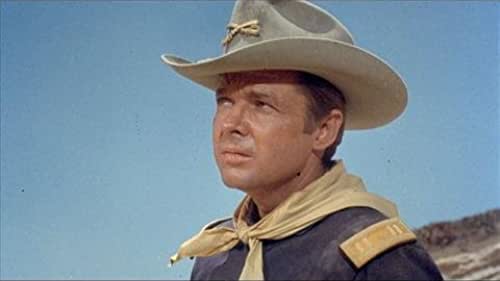
He was eventually persuaded, and the film became a huge hit, earning $10 million and being Universal’s most successful film for the next 20 years until Steven Spielberg’s “Jaws.” In total, Murphy made 44 films, 33 of which were westerns, mostly low-budget.
Awards and achievements
Murphy received three Purple Hearts for wounds sustained in September and October of 1944 and the following year. In the same year, he was also awarded the Bronze Star and the Bronze Oak Leaf Cluster, both with the ‘V’ device. In 1945, Murphy was given the Medal of Honor and the Legion of Merit. Additionally, he received military badges such as the Combat Infantryman’s Badge, the Marksman’s Badge, and the Specialist’s Badge. In 1960, he was recognized as a star on the Hollywood Walk of Fame for his contribution to cinema. Additionally, Murphy received the Distinguished Civilian Service Medal for providing technical assistance on the military documentary “Broken Bridge.”
Death and legacy
Audie Murphy died in a plane crash on May 28, 1971, at 45. Two years later, the Audie L. Murphy Memorial Veterans Hospital was opened in San Antonio, and a 3-meter bronze statue of Murphy in his combat uniform, holding a rifle and weighing one ton, was placed in front of the hospital. His grave at the Arlington Military Cemetery in Washington is the second most visited, second only to the grave of John F. Kennedy.
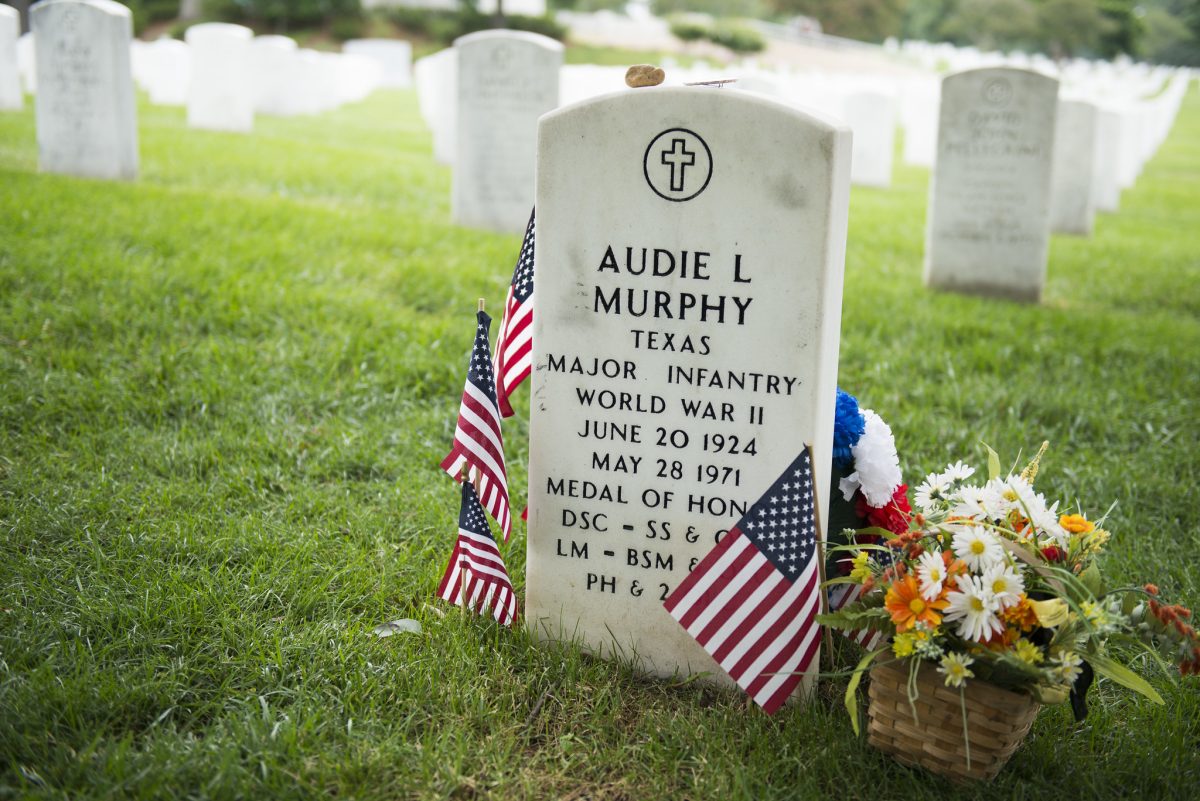
A plaque was also erected in Murphy’s memory at the site of his death in Brush Mountain in 1974. The Audie Murphy Sergeant Club at Fort Hood, Texas, was founded in 1986 to recognize officers as courageous as Murphy. Additionally, the American Cotton Museum in Greensville was named after him, and his bronze statue was unveiled in 2002. Finally, several countries have issued stamps honoring Murphy, including Sierra Leone and Guyana.
Audie Murphy’s contributions to the U.S. military will always be remembered and celebrated. He is an American hero who exemplifies bravery, determination, and sacrifice. His legacy symbolizes the courage and sacrifice of all soldiers who have served in the U.S. military.


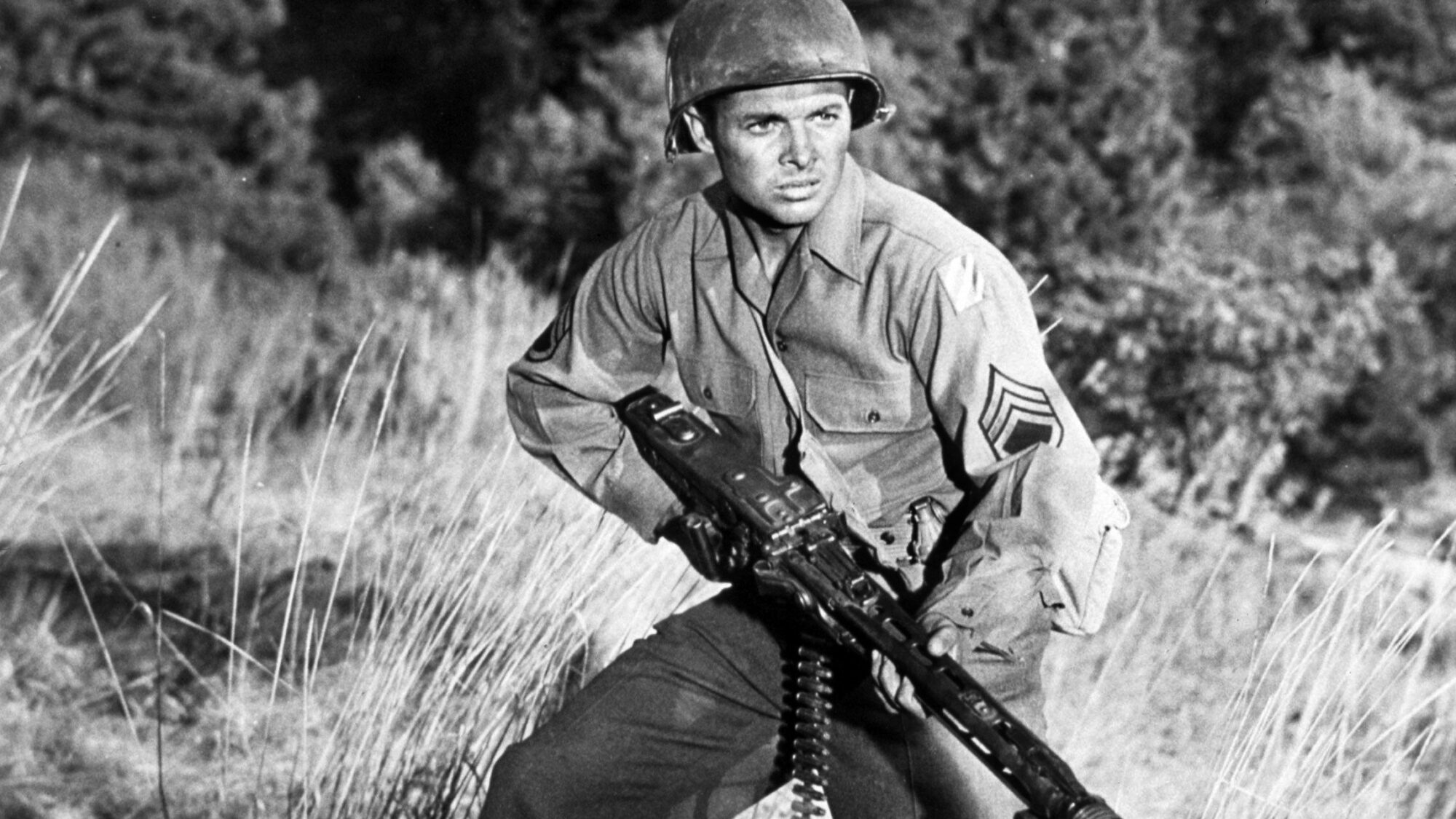
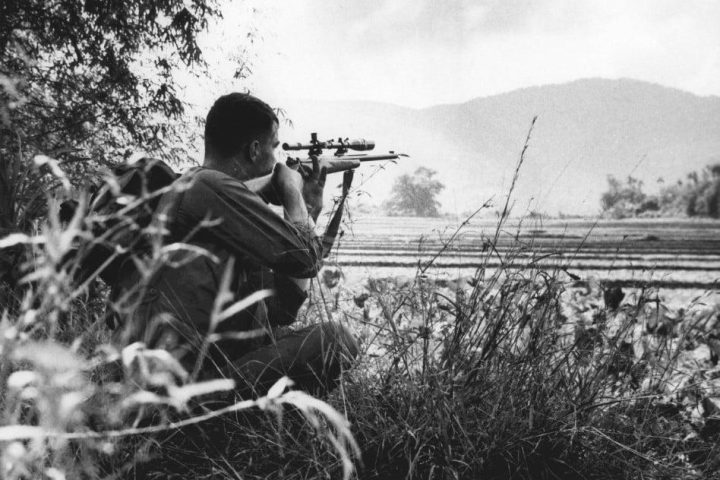
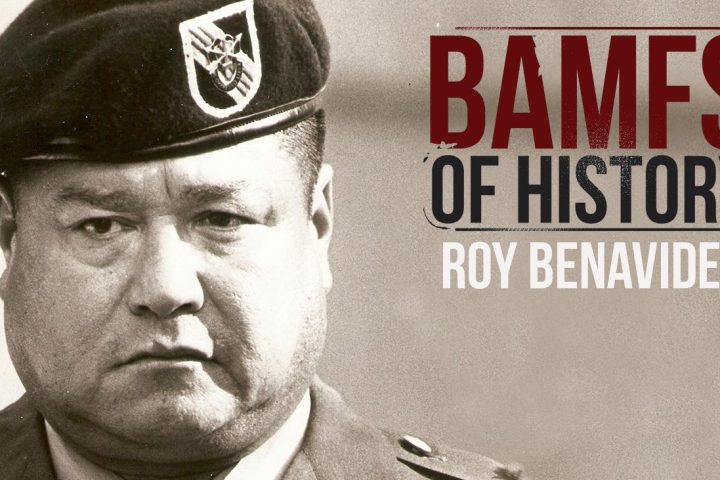
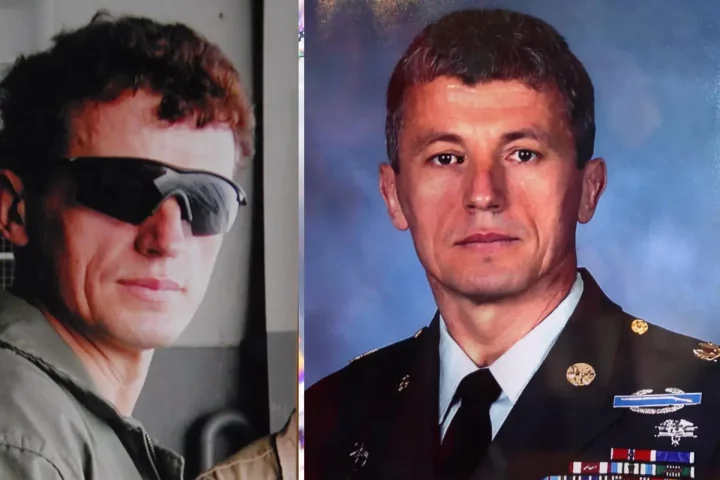
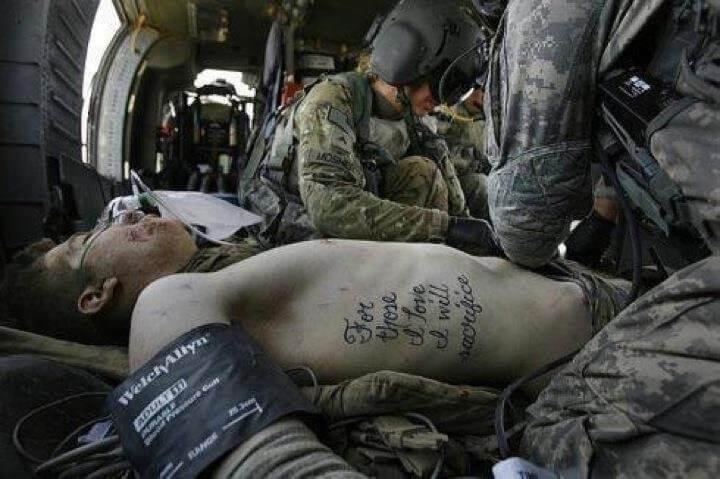
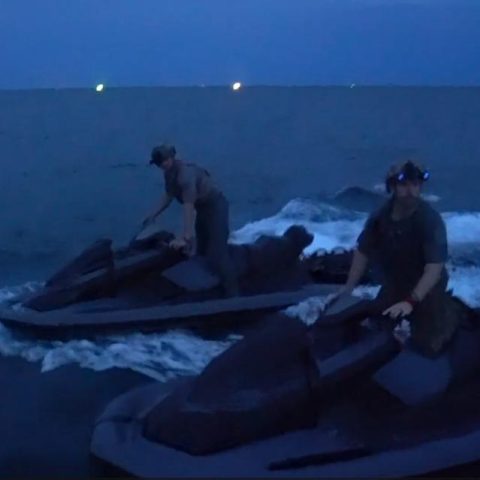
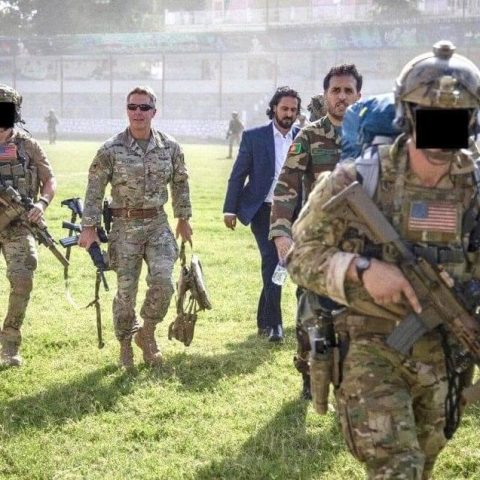
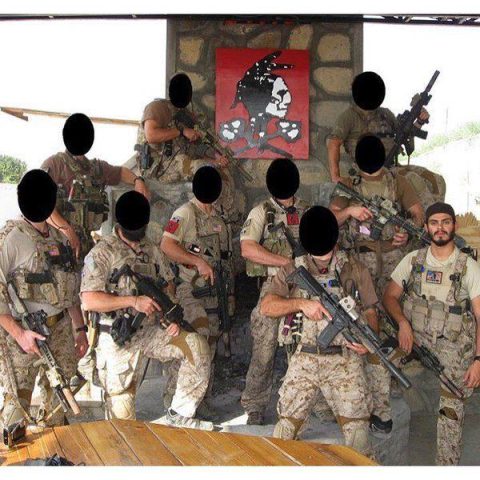
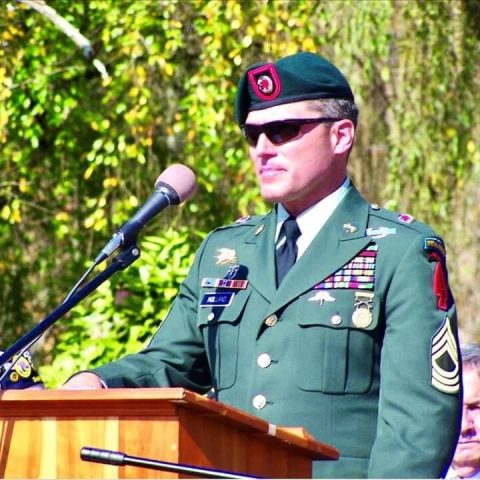
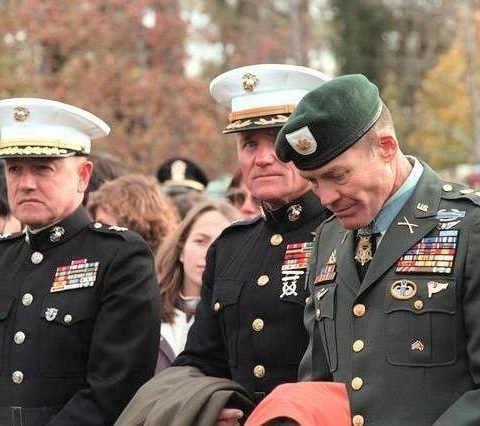
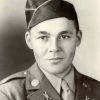
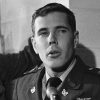
Just to be clear, he is nowhere near the most decorated soldier in American history. That would be, without a question, General of the Army Douglas MacArthur. I in no way want to take away from Audie Murphy’s amazing feats, just stating the facts. Murphy received the Medal of Honor, Distinguished Service Cross, two Silver Stars (and is one of only 37 men to have received all three of the nation’s highest valor awards) and two Bronze Stars with the V device, for a total of 6 valor awards. Those are his combat valor awards, add to the Legion of Merit, in this case given for leadership. MacArthur on the other hand received the Medal of Honor (his father did too), 3 Distinguished Service Crosses, 7 Silver Stars, the Distinguished Flying Cross and a Bronze Star with V device. That gives him a total of 13 valor awards, more than twice as many as Murphy.
If look at just WWII there are many, more than a dozen, men who received as many or more valor awards, even if you look at only those who received the Medal of Honor. Fellow Texan Samuel Dealey received the Medal of Honor, 4 Navy Crosses and a Distinguished Service Cross and a Silver Star, 7 valor awards, on average much higher than the Murphy average, from an order of precedence standpoint. Richard H O’Kane: Medal of Honor, 3 Navy Crosses and 3 Silver stars as well as Legion of Merit with V device…8 Valor awards, again higher average overall. John Duncan Bulkeley is another, Eugene Fluckey, Joel T Boone, Thomas McGuire, Richard Bong, Merritt Edson…
Anyway, you get my point.